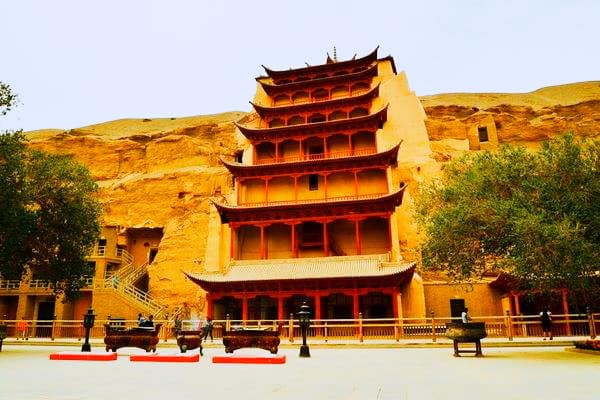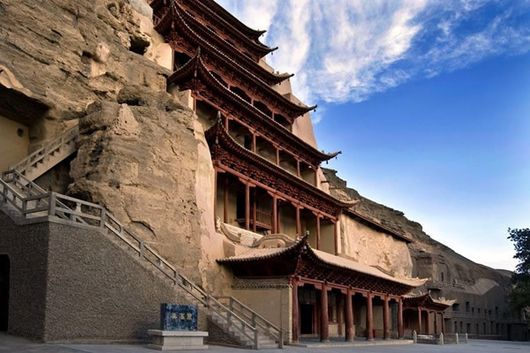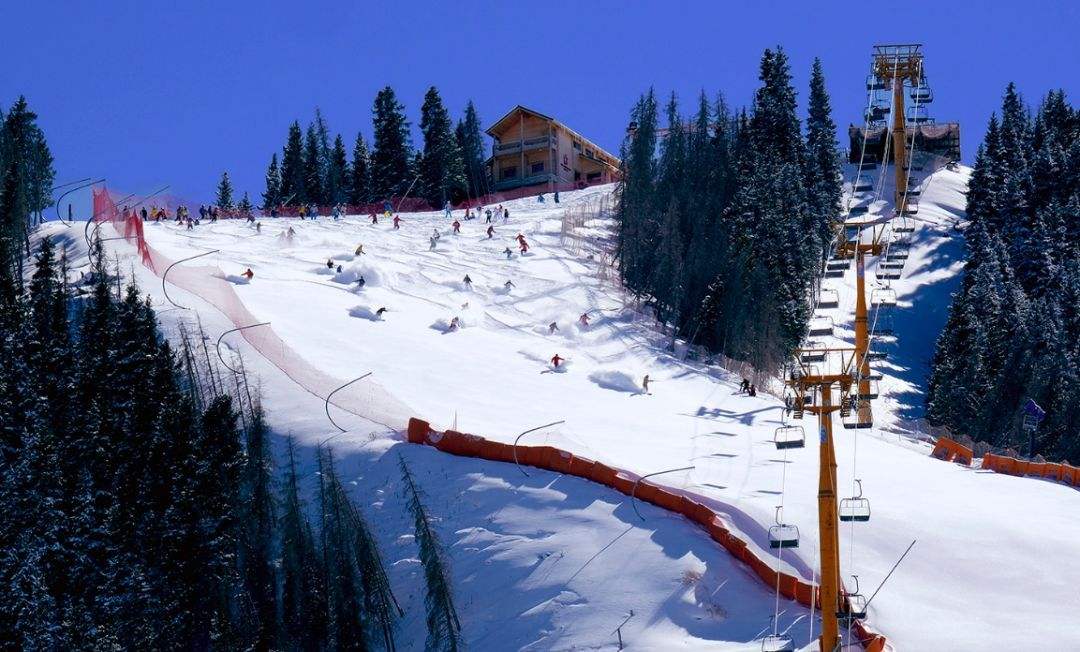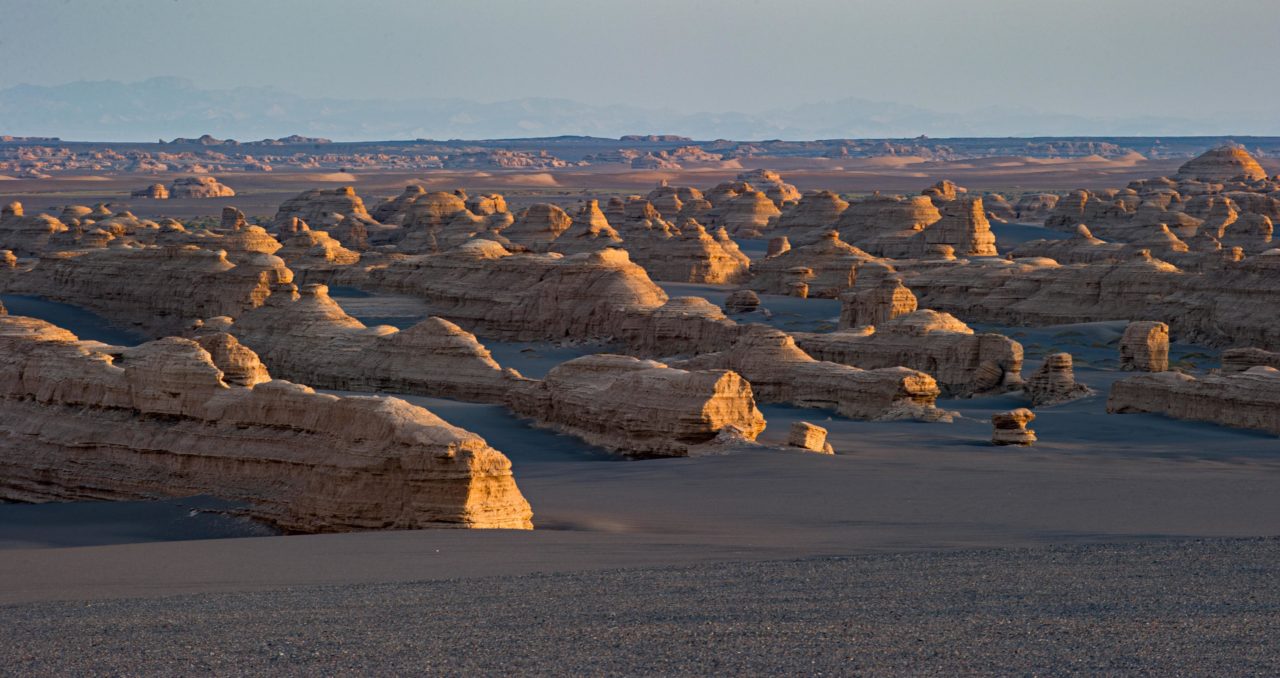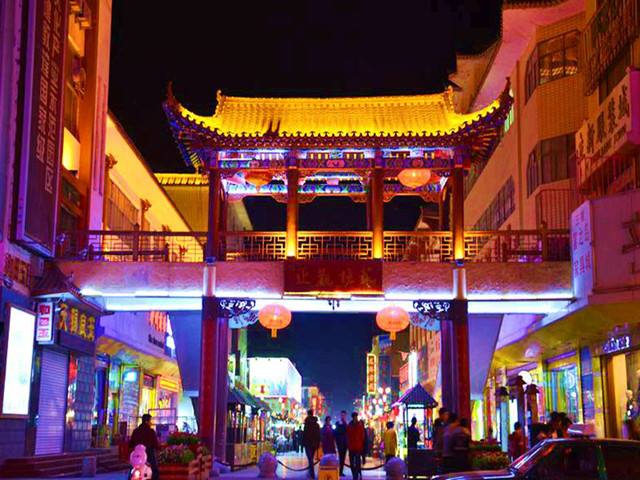Mogao caves In Dunhuang
- Description
- Gallery
Mogao Grottoes, commonly known as thousand Buddha Caves, are located in Dunhuang at the west end of Hexi corridor. It was first built in the pre Qin period of the sixteen countries. There are 735 caves, 45000 square meters of murals, 2415 clay colored sculptures. It is the largest and richest Buddhist art place in the world..Mogao Grottoes, together with Yungang Grottoes in Datong, Shanxi, Longmen Grottoes in Luoyang, Henan and Maijishan Grottoes in Tianshui, Gansu, are called the four largest Grottoes in China.Mogao Grottoes are built on the cliff at the east foot of Mingsha mountain. With a total length of 1680 meters from the south to the north, there are 735 caves built in previous dynasties, which are distributed on cliffs with a height of more than 15-30 meters, and 1-4 layers above and below. It is divided into two areas: the South and the north. The south area is the place for Buddhist activities. There are 492 caves with murals and colored sculptures in each dynasty. There are more than 2400 colored sculptures, and more than 45000 square meters of murals. There are five wooden eaves in the Tang and Song dynasties. There are also nine storey buildings rebuilt in the early Republic of China as the symbol of Mogao Grottoes. There are more than 20 lotus pillars and stupas, and more than 20000 floor tiles. 243 caves in the north area (another 5 caves have been incorporated into 492 caves in the north area) are places for monks to practice, live and bury. There are cultivation and living facilities such as Kang, hearth, flue, niche, lampstand, etc.
- Description
- Gallery
Mogao Grottoes, commonly known as thousand Buddha Caves, are located in Dunhuang at the west end of Hexi corridor. It was first built in the pre Qin period of the sixteen countries. There are 735 caves, 45000 square meters of murals, 2415 clay colored sculptures. It is the largest and richest Buddhist art place in the world..Mogao Grottoes, together with Yungang Grottoes in Datong, Shanxi, Longmen Grottoes in Luoyang, Henan and Maijishan Grottoes in Tianshui, Gansu, are called the four largest Grottoes in China.Mogao Grottoes are built on the cliff at the east foot of Mingsha mountain. With a total length of 1680 meters from the south to the north, there are 735 caves built in previous dynasties, which are distributed on cliffs with a height of more than 15-30 meters, and 1-4 layers above and below. It is divided into two areas: the South and the north. The south area is the place for Buddhist activities. There are 492 caves with murals and colored sculptures in each dynasty. There are more than 2400 colored sculptures, and more than 45000 square meters of murals. There are five wooden eaves in the Tang and Song dynasties. There are also nine storey buildings rebuilt in the early Republic of China as the symbol of Mogao Grottoes. There are more than 20 lotus pillars and stupas, and more than 20000 floor tiles. 243 caves in the north area (another 5 caves have been incorporated into 492 caves in the north area) are places for monks to practice, live and bury. There are cultivation and living facilities such as Kang, hearth, flue, niche, lampstand, etc.


